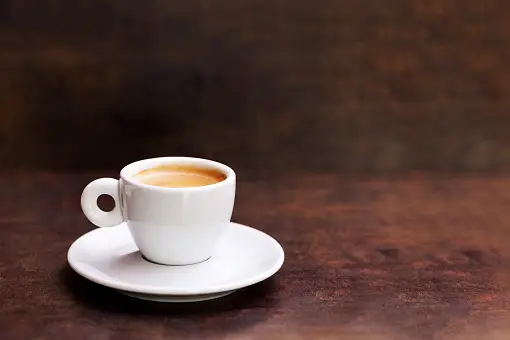In the labyrinth of bustling coffee shops and the comforting aroma of freshly brewed beans, the question lingers like a cloud of steam: Does espresso have more caffeine than coffee? It’s a riddle that not only tickles the taste buds of connoisseurs but also tugs at the curiosity of those seeking the perfect cup to start their day. With the rising wave of coffee culture, understanding the caffeine content in each cherished brew is a must for enthusiasts, health-conscious consumers, and even the casual coffee sipper. Join us as we explore this integral part of your coffee ritual and demystify the caffeinated conundrum.
Table of contents

Exploring the Basics
Before we plunge into the caffeine levels, it’s vital to understand what caffeine is and how it interacts with our precious vessel – the human body. Caffeine, a natural stimulant found in over 60 plant species, including coffee beans, jump-starts our central nervous system. It’s the force behind our morning alertness, our post-lunch pick-me-up, or the late-night study sessions. The difference in caffeine levels between espresso and coffee is a mere extension of our affinity for that jolt it prompts.
But what about the variance in preparation and taste? Espresso, the epitome of the Italian coffee experience, is a concentrated shot, brewed quickly by forcing hot water through finely-ground coffee. It’s known for its robust flavors and velvety texture. Contrastingly, the more leisurely produced coffee, typically through methods like drip brewing or French press, offers a larger volume that’s savored for its unique profile and full-bodied taste.
Best Espresso Machine

De’Longhi Dinamica Espresso Machine
- ALL-IN-ONE BARISTA
- EASY TO USE
- YOUR FOAM, YOUR WAY
- QUICK CLEANUP
- White Color
- 1.3 Liter Capacity
- 1250 watt hour
Understanding Caffeine Content
Statistically, here’s the scoop on your caffeine fix: A single ounce of espresso typically packs between 47-75 milligrams of caffeine, compared to average drip coffee which ranges from 12-16 milligrams per ounce. This might seem staggering at first glance, leading to the common misconception that espresso is always more stimulating than its brewed brethren. However, the truth lies in the dose and the brewing methodology.
Several factors influence the caffeine content in your cup of joe. The type of bean (Arabica vs. Robusta), the grind size (finer for espresso, coarser for drip), and the extraction time (seconds for espresso, minutes for coffee) all play pivotal roles. While espresso might deliver a more potent dose per ounce, a standard serving size of 1.5 ounces with its 63 milligrams on average still contends with the larger volume typically drank with coffee.
Health Implications
For the health-conscious, the caffeine debate extends beyond mere preference. Caffeine, when consumed in moderation, has been associated with improved alertness, concentration, and physical endurance. Its presence in the routine diet can have cognitive and physical performance benefits. However, excessive intake can lead to issues such as insomnia, jitters, and increased heart rate.
Individual health situations also warrant consideration. Those sensitive to caffeine, pregnant women, and individuals with conditions like acid reflux or high blood pressure should heed caution. The lower caffeine content in coffee can provide a gentler way to enjoy the beverage, aligning with health directives.
Mythbusting & Common Misconceptions
Navigating the coffee landscape requires a keen eye for the myths that flourish. The belief that dark roasts contain more caffeine than light ones, the notion that espresso is always stronger, and that decaf means zero caffeine are just a few prevalent fallacies. Clarifying these untruths fosters a more educated consumer base, one that can truly appreciate their cup without the echo of false information clouding their enjoyment.
Espresso that relies on Robusta beans does indeed have a higher caffeine content than Arabica. However, as a consumer, the roast type, the origin of the beans, and the blend impact your caffeine intake and flavor preference. Understanding these factors empowers you to select your espresso or coffee with intention.
Practical Tips for Consumers
For those who love the ritual but are mindful of the caffeine intake, practical adjustments can make a difference. Opting for a smaller size or a single-serve coffee maker rather than a carafe can control the serving size and, therefore, the caffeine dose. Investing in a quality cup that you can brew at home gives you the autonomy to personalize your caffeine kick to perfection.
Another strategy is to choose a decaffeinated blend. While “decaf” doesn’t mean caffeine-free, it does mean substantially lower levels. This is an excellent middle ground for those looking to enjoy multiple cups without crossing their caffeine threshold.

Conclusion
The allure of coffee, with its complex flavors and rich diversity, is complemented by the caffeine content that frames our daily interactions with it. Understanding the nuances of caffeine in espresso versus coffee is a small yet essential step toward a more informed coffee culture. As with any great debate, the verdict is not about “more” or “less” but about the artistry and science behind our beloved beverage. Whether you’re an aficionado chasing the jitters or a health enthusiast seeking balance, the coffee world has a brew that’s just right for you.
In wrapping up, the quest for the perfect jolt continues. Remember to savor not just the sip, but the story behind your coffee — and always in good company, be it friends, a great book, or the quiet stillness of a morning alone. With these insights in hand, your caffeinated adventures will not only stimulate your senses but also enrich your appreciation for the cup that connects so many of us daily. Happy brewing!






